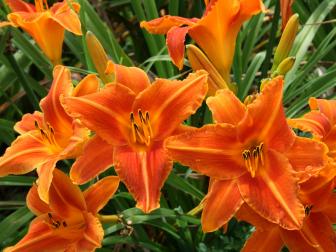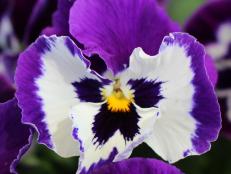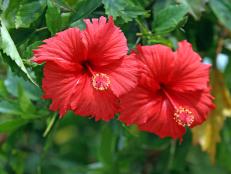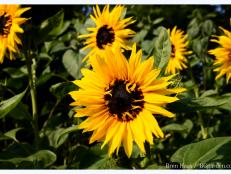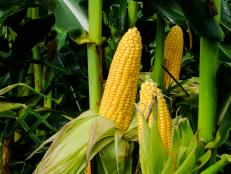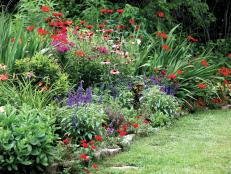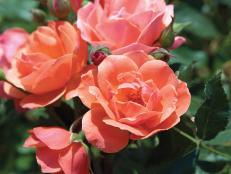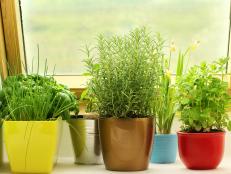How to Grow Daylilies
With some advance planning, you can have glorious daylilies for spring by planting in the fall with this advice from HGTV gardening experts.

Image courtesy of Oakes Daylilies
The daylily is a summer-flowering beauty whose name, Hemerocallis, translates to "beauty for a day" because most daylilies tend to bloom in the morning and then die by nightfall. But even though individual flowers only bloom in the course of a day, the multiple buds that form on their flower stalks (known as scapes) mean that flowers can open on successive days, leading to a continuous flower show.
If you’re like many daylily enthusiasts, you might find this flower addictive, both for its ephemeral nature and its spectacular beauty.
Daylilies are a popular perennial because they are hard to kill and thrive in a variety of garden zones and under a variety of conditions. As an added bonus, daylilies tend to not have issues with either the pests or the diseases that can plague other lilies.
Daylily Varieties
Discover 70 Different Daylily Varieties 70 Photos
With an endless array of cheery colors and shapes, there's a daylily for every garden. Learn about the different varieties of this hardy perennial.
Lilies vs. Daylilies
Daylilies, unlike true lilies, don't grow from bulbs but from a mass of fleshy roots that retain nutrients and moisture, allowing the plants to survive a wide variety of climates.
While it's always easy to find young daylilies ready to plant in spring, planting these fleshy roots is an economical and surprisingly easy way to ensure a garden bed of daylilies — with very little extra work — next spring. Here's how to get started.
Understand Your Region
As long as the ground is frost-free you can plant daylilies. But depending where you live, you may want to get a move on or hold off a little longer. In southern climates, it's still hot enough to fry a daylily root in September, but in the upper Midwest, getting roots in the ground in early fall gives them a better chance to establish strong roots. Talk to an experienced gardener in your area to find out the best time to plant.
Know Your Variety
If you're getting divided roots from a friend or neighbor, find out what kind of daylily it is to decide where to plant. Most varieties grow well pretty most anywhere, but paler shades may need more sun while some deeper-colored varieties do best with some shade.
How to Plant Daylilies
Daylilies can be classed by flower color, by their flower form (trumpet, double, ruffled, recurved), by their height and by their bloom time. A nice option to have daylilies all summer long is to plant a variety of lilies with early-, mid- and late-blooming tendencies.
Light
Daylilies prefer full sun (six or more hours per day) and moist, well-drained soil to thrive. Amend the soil with compost before planting.
Planting time
In the South, plant daylilies in fall or early spring when temperatures are still cool, and plant in the spring in the North.
Prepare your roots for planting
Store your roots in a cool place until you're ready to plant them. Before planting, soak the bare root in water for an hour or two.
Dig a hole about a foot deep
Create a cone-shaped mound of loose soil at the bottom of the hole to hold the root. Spread the daylily's root system over the mound, then fill in around the root with loose soil. Daylilies should be spaced 18" to 24" apart.
Cover the crown
The crown is the area where the leaves meet the tops of the roots. Cover the crown with about an inch of loose soil. Gently firm up the soil around the roots, but don't tamp it down tightly. Mulch with bark or pine straw.
Water immediately after planting
Water your daylilies daily for a week or two after planting if it's dry out. While daylilies are so hardy they don't really need much over-wintering care, a layer of mulch may help them establish a stronger root system.
Additional Care
Fertilizing
An extended-release fertilizer is a good choice in late spring to help reblooming dayliles continue blooming.
Dividing Daylilies
The best time to divide daylilies is in late summer. Dig up plants and soak them in water for a few hours to remove soil and allow you to better see where to divide. After soaking, place the plants on a tarp. Use a sharp knife to separate plants with strong root systems. Cut back foliage and replant immediately.
Pruning
Remove yellow leaves throughout the blooming cycle, which will help daylily plants to produce more leaves.
End of Season Care
Cut leaves off about two inches above the base of the plant in the fall and mulch with straw to protect plants during harsh winters.






